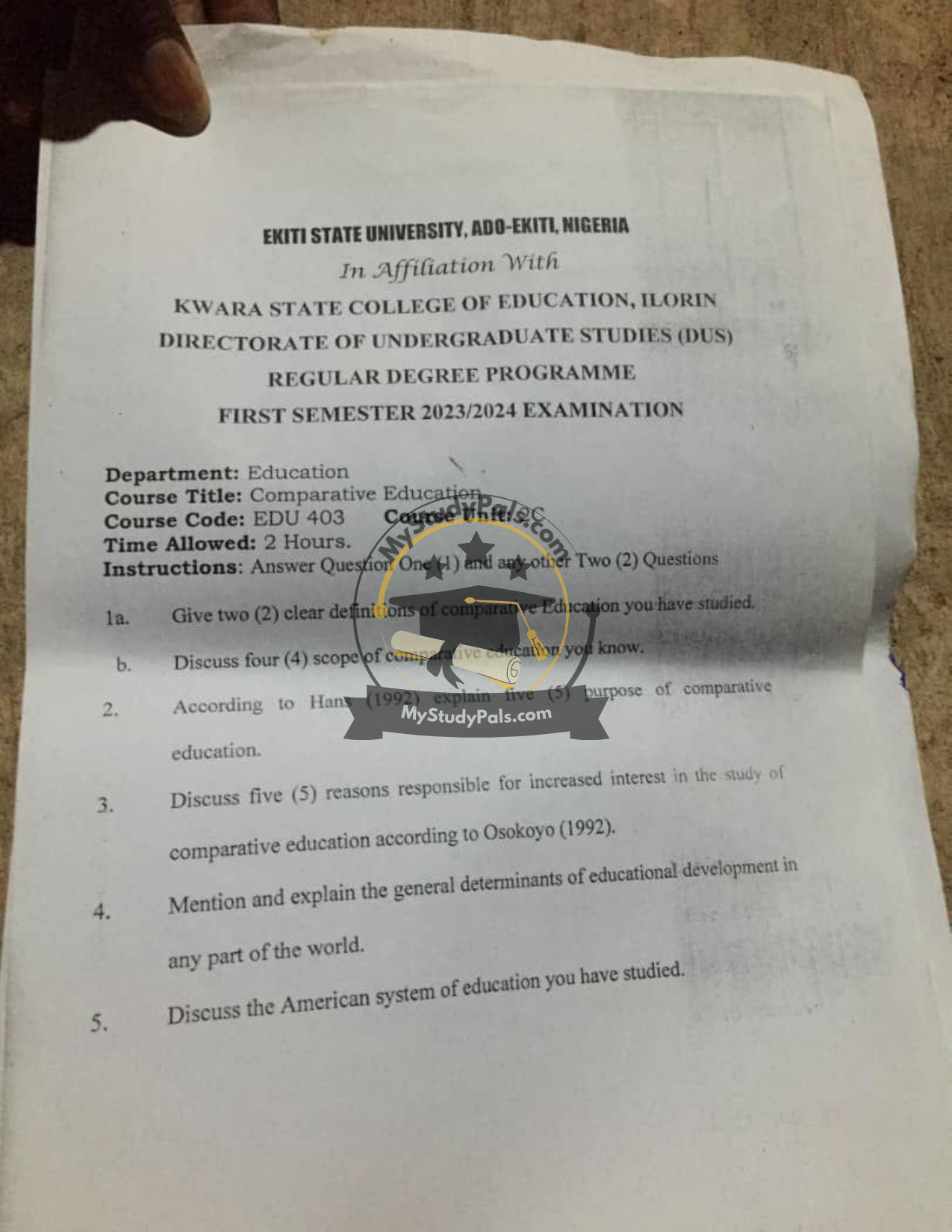ANWSER
—
### Question 1a:
Give two (2) clear definitions of comparative Education you have studied.
Answer:
1. Comparative Education is the systematic study and comparison of different educational systems, policies, and practices across nations to identify similarities, differences, and trends.
2. It is an interdisciplinary field that examines the relationships between education and societal factors such as culture, politics, and economics in different countries.
—
### Question 1b:
Discuss four (4) scope of comparative education you know.
Answer:
1. Historical Development: Examines the evolution of educational systems over time in different countries.
2. Philosophical Foundations: Analyzes the underlying beliefs and ideologies shaping education in various societies.
3. Socio-Cultural Influences: Studies how culture, traditions, and social norms impact education.
4. Economic and Political Factors: Investigates the role of government policies and economic conditions in shaping education systems.
—
### Question 1c:
According to Hans (1992), explain five (5) purposes of comparative education.
Answer:
1. To Identify Best Practices: Helps in adopting effective educational strategies from other countries.
2. To Promote International Understanding: Encourages global cooperation and cultural exchange.
3. To Improve Educational Policies: Provides insights for reforming national education systems.
4. To Understand Educational Problems: Analyzes challenges faced by different countries and their solutions.
5. To Foster Academic Research: Encourages scholarly studies on global educational trends.
—
### Question 1d:
Discuss five (5) reasons responsible for increased interest in the study of comparative education according to Osokoyo (1992).
Answer:
1. Globalization: Increased interconnectedness has made cross-national educational comparisons essential.
2. Educational Reforms: Governments seek innovative ideas from other countries to improve their systems.
3. Technological Advancements: Easier access to information has facilitated comparative studies.
4. Migration and Mobility: People moving across borders necessitates understanding different education systems.
5. International Assessments: Programs like PISA and TIMSS have heightened interest in comparing educational outcomes.
—
### Question 1e:
Mention and explain the general determinants of educational development in any part of the world.
Answer:
1. Economic Factors: Wealth and resource allocation significantly influence education quality and accessibility.
2. Political Policies: Government priorities and legislation shape educational structures and funding.
3. Cultural Values: Societal attitudes toward education affect enrollment and curriculum design.
4. Technological Progress: Availability of technology impacts teaching methods and learning opportunities.
5. Demographic Trends: Population size and distribution determine resource needs and infrastructure planning.
—
### Question 1f:
Discuss the American system of education you have studied.
Answer:
The American education system is decentralized, with significant control given to states and local districts. Key features include:
1. Structure:
– Elementary School (K-5)
– Middle School (6-8)
– High School (9-12)
– Higher Education (Colleges/Universities)
2. Curriculum: Focuses on core subjects (Math, Science, English, Social Studies) with elective options.
3. Assessment: Standardized testing (e.g., SAT, ACT) is common for college admissions.
4. Higher Education: Diverse institutions (Community Colleges, Liberal Arts Colleges, Research Universities) offering flexible programs.
5. Challenges: Disparities in funding and quality between urban and rural schools.
—


